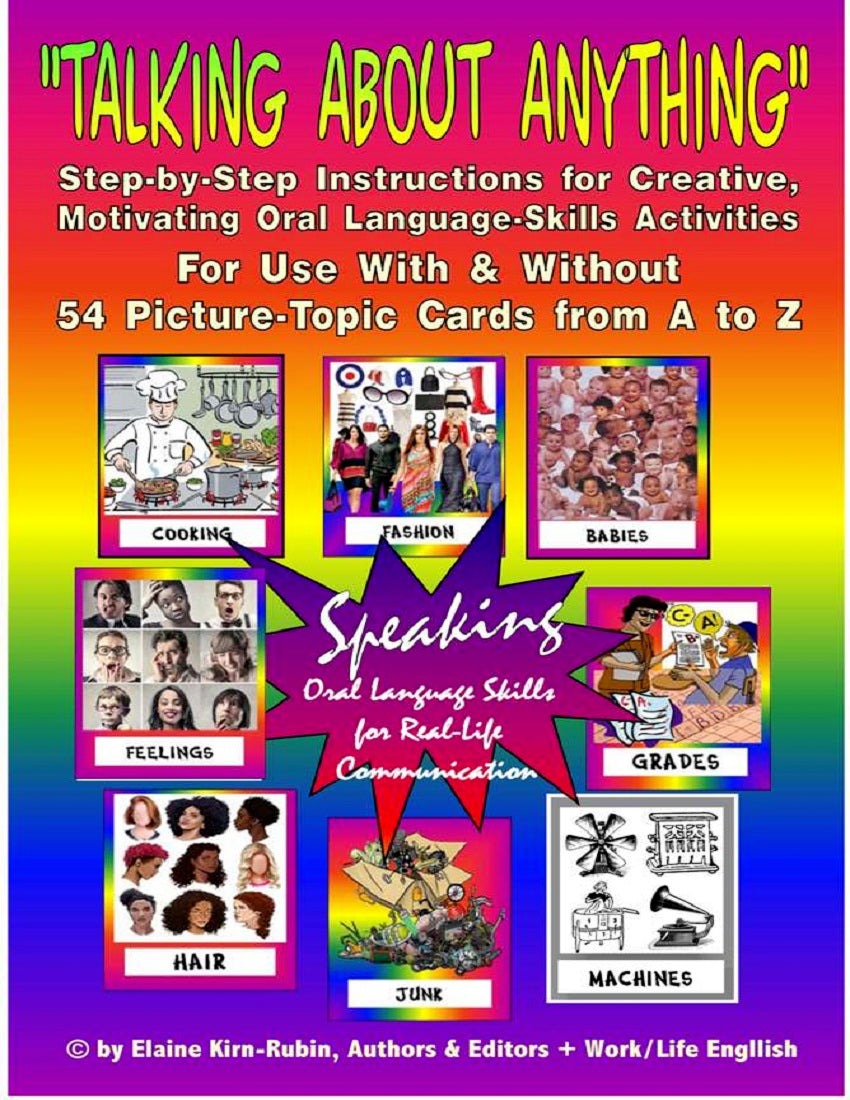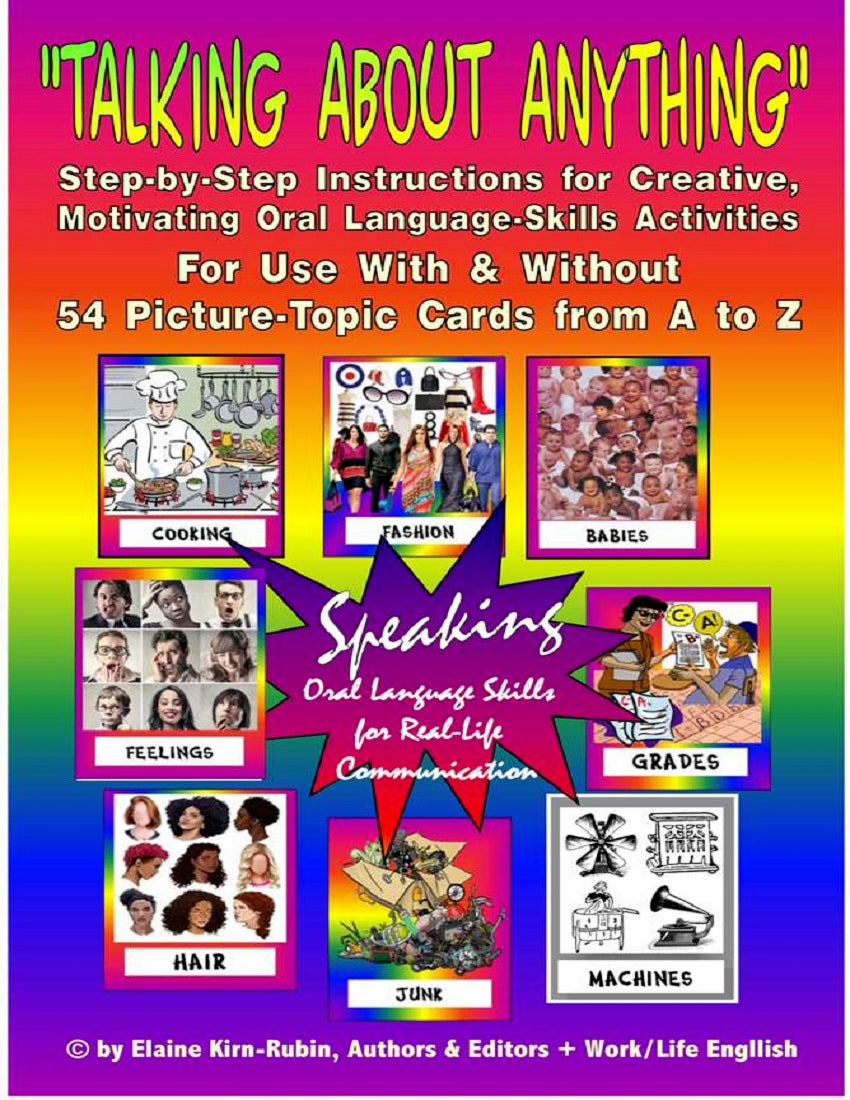Work/Life English
E-13a Talking About Anything (40 Page Activities & Ideas Book)
E-13a Talking About Anything (40 Page Activities & Ideas Book)
40-Page Activity & Idea Book That’s a Teaching Resource for “Talking About Anything”—With or Without Picture-Topic Cards
40 5.5” x 8.25” pages
Who It’s For: (American-) English Teachers, Helpers, & Learners Wanting Cheerful Ways to “Just Talk” & Interact About Hundreds of Typical Topics at School or Work & in Life
Why It’s Useful: Even if they’re not usually talkative in social situations, just about everybody has something to say about everyday topics such as aging, driving, food, jobs, kids, love, men (or women), prices, sports, and/or hundreds of other matters that come up in (relaxed) pass-the-time chatter. But instead of keeping such thoughts or feelings to themselves, users of this How-to Talk About Anything Ideas & Activities Book will feel motivated to contribute to conversational discourse in “Creative Thinking Games” and “Effective Speaking & Listening Activities.” Vocabulary Lists for “54 Picture-Topic Cards from A to Z” will help, as will Supplementary Lists of Speaking Topics.
What You’ll Do:
[1] On pages 1-6, peruse the Cover, the “Message to Educators,” the 54 subjects of the Picture-Topic Cards A to Z, the Table of Contents, and the introduction to the concept of “Talking About Anything.” On pages 7-10, choose one or more “Creative Thinking Games or Activities” (Association Lines & Circles, Creative Sentences, Story Lines, Categories, & Cue Words) you’d like to try with Topic Cards that you’ve either downloaded or created yourselves.
[2] Activities 6-8 on pages 11-17 tell how to present or take part in a major pursuit: Creating, Presenting, & Comprehending ‘Oral Essays’.” With the aid of explanation, tips, and examples, participants choose topics; get and supplement given vocabulary; brainstorm; create Idea Maps; do Free-Writing to polish by deleting, adding words, and organizing; and augment what they have with “online research.” Then in turn, individuals or pairs follow steps to “present their creations.” Optimally, listeners understand, make good use of, and help improve what they hear and take notes on.
[3] On pages 18-21 are Activity 8: the Complaint Brainstorming Game and Activity 9: Paired Speeches: Whining vs. Valuing. Then there are 13 pages of illustrated “Vocabulary Lists” for all 54 Card Topics. Finally, there’s a long Supplemental List of More Topics for “Talking About Anything.”
Couldn't load pickup availability


